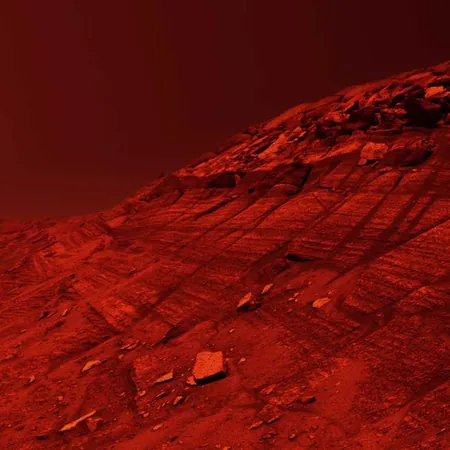
Unlocking the Secrets of Life Beyond Earth: Isotope Signatures and Astrobiology
2025-06-04
Author: Noah
The Quest for Alien Biosignatures
Astrobiologists and exoplanet astronomers have set their sights on discovering definitive signs of life in the atmospheres of distant worlds. This thrilling pursuit revolves around identifying specific gas combinations that suggest biological activity.
Key Indicators of Life: Gas Mix and Isotopes
By targeting unusual pairings of gases, like methane (CH4) and ozone (O3), researchers aim to reveal the presence of potential biosignatures. Individual gases, such as dimethyl sulfide (DMS), are also critical indicators of biological life. However, to truly elevate the search for extraterrestrial life, it’s essential to delve into the isotope ratios of these atmospheric components.
Carbon Isotopes: Earth's Clue to Life
Carbon isotope ratios in carbon dioxide (CO2) and methane hold particularly valuable clues. On Earth, volcanic activity and thermogenesis contribute to a notable difference in the carbon-13 isotope ratio—around -25‰—between atmospheric methane and carbon dioxide. Surprisingly, this difference could have shifted drastically, possibly reaching -95‰ due to the influence of hydrogenotrophic methanogens.
Nitrogen Isotopes: The Subtle Indicators
While nitrogen fixation by nitrogenase creates a relatively slight difference in the nitrogen-15 isotopic ratio between N2 and ammonia (NH3), the implications are profound. Ancient Earth and rocky exoplanets may reveal significant biosignatures alongside more dominant photochemical signals. For example, extreme enrichment of nitrogen in hydrogen cyanide (HCN) might arise from photochemical self-shielding of nitrogen, a non-biological process.
Sulfur's Role in Atmospheric Chemistry
Photochemical reactions can also give rise to telltale sulfur signatures. For instance, self-shielding in sulfur dioxide (SO2) could lead to detectable enrichment of sulfur-34 in sulfur monoxide (SO) in atmospheres akin to that of the exoplanet WASP-39b.
The Future of Exoplanet Research
To enhance the accuracy of detecting these isotopes in terrestrial-type exoplanet atmospheres, scientists will require advanced instruments equipped with higher spectral resolutions and greater light-collecting capabilities than what we have today. The quest for life beyond our planet continues, with each new discovery bringing us closer to understanding the universe's potential for life.
Conclusion: A New Era for Astrobiology
The investigation into C, N, and S isotopes offers a promising pathway for revealing the secrets of life on other planets. As technology advances and research deepens, the dream of finding extraterrestrial life inches ever closer to reality.









 Brasil (PT)
Brasil (PT)
 Canada (EN)
Canada (EN)
 Chile (ES)
Chile (ES)
 Česko (CS)
Česko (CS)
 대한민국 (KO)
대한민국 (KO)
 España (ES)
España (ES)
 France (FR)
France (FR)
 Hong Kong (EN)
Hong Kong (EN)
 Italia (IT)
Italia (IT)
 日本 (JA)
日本 (JA)
 Magyarország (HU)
Magyarország (HU)
 Norge (NO)
Norge (NO)
 Polska (PL)
Polska (PL)
 Schweiz (DE)
Schweiz (DE)
 Singapore (EN)
Singapore (EN)
 Sverige (SV)
Sverige (SV)
 Suomi (FI)
Suomi (FI)
 Türkiye (TR)
Türkiye (TR)
 الإمارات العربية المتحدة (AR)
الإمارات العربية المتحدة (AR)